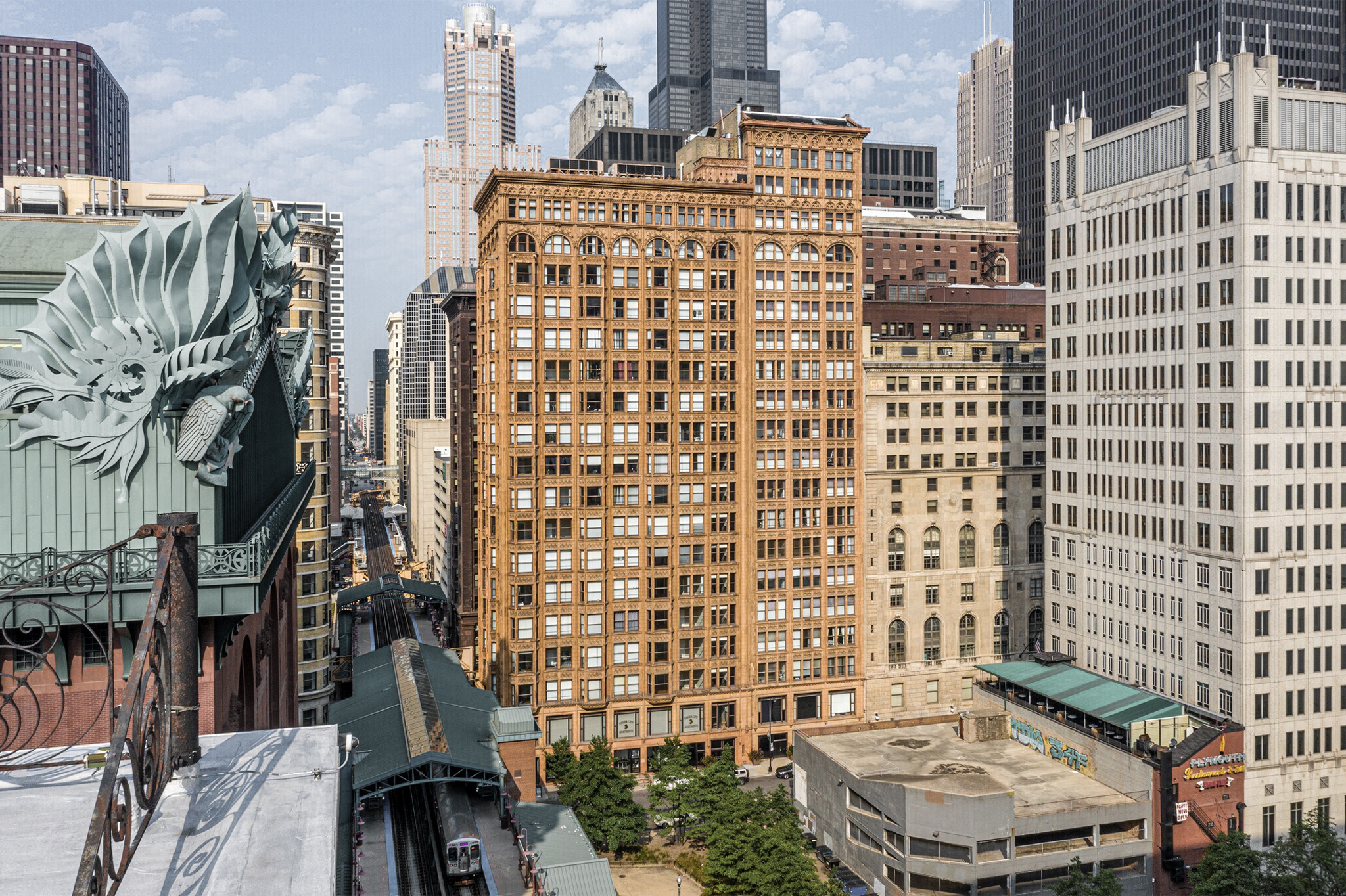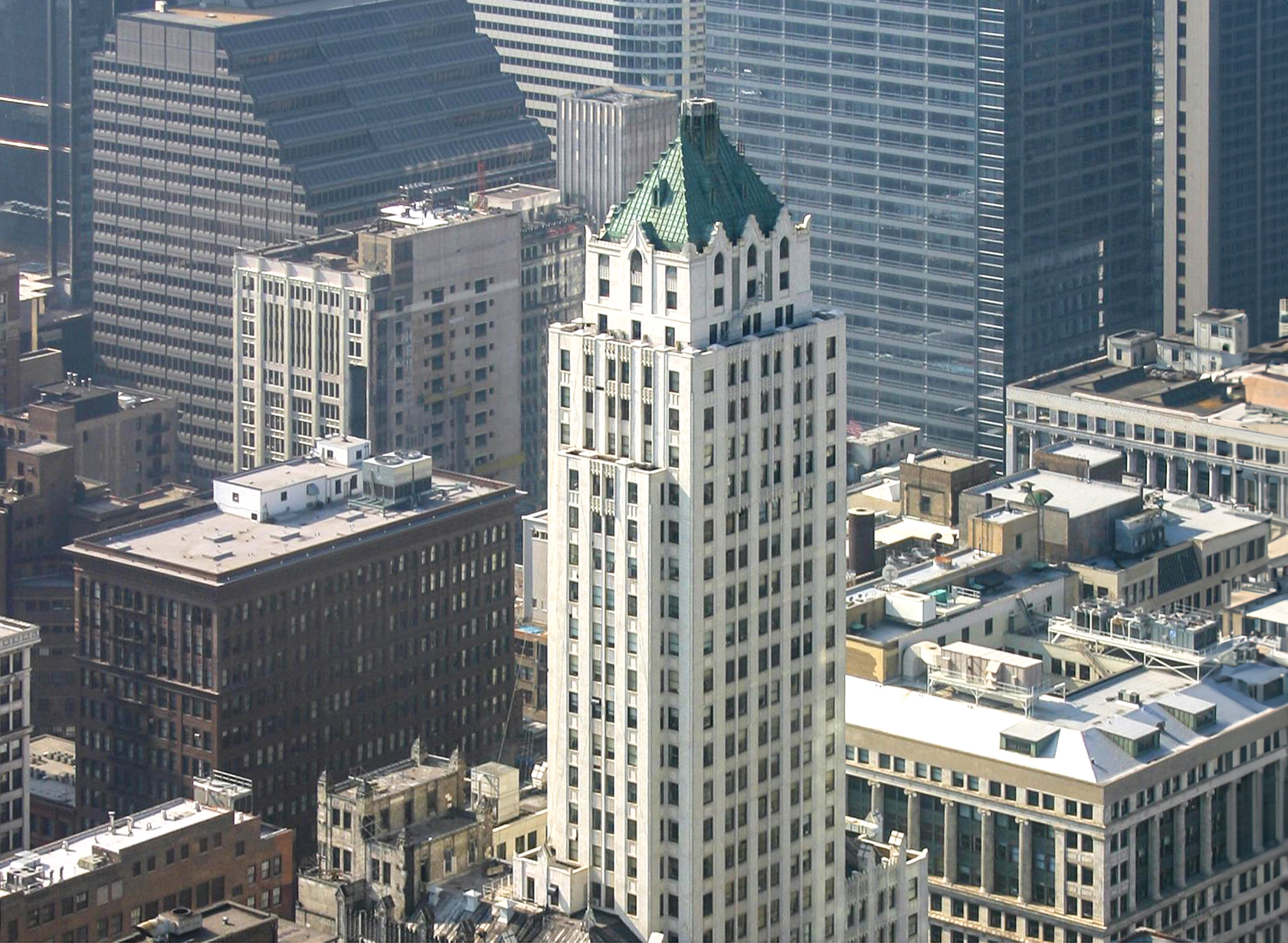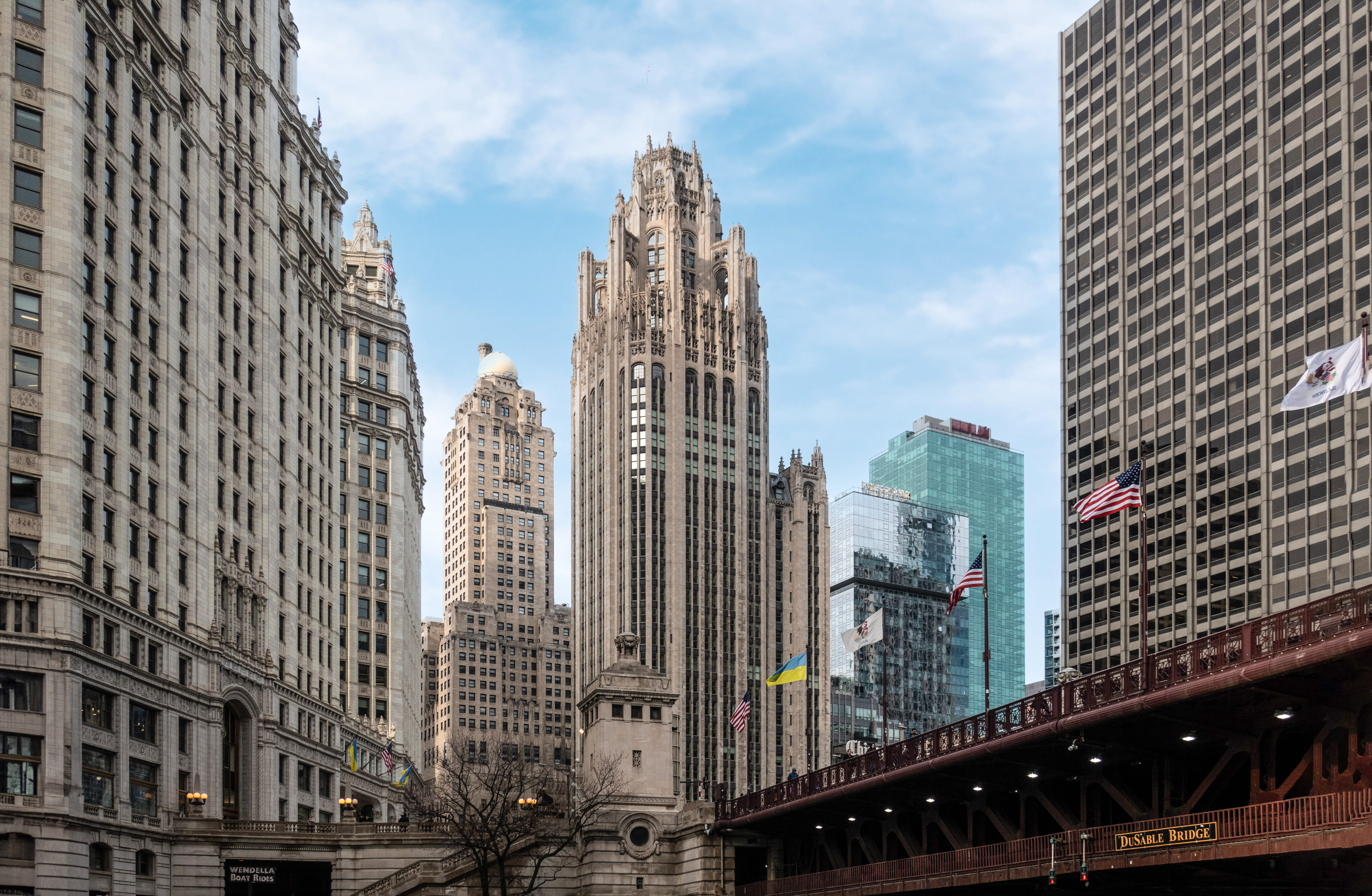The Fisher Building is a Neogothic skyscraper designed by D. H. Burnham & Company, and built between 1927 and 1896 in Chicago, IL.
Its precise street address is 3011 W. Grand Blvd., Chicago, IL. You can also find it on the map here.
The Fisher Building is a structure of significant importance both for the city of Chicago and the United States as a nation. The building embodies the distinctive characteristic features of the time in which it was built and the Neogothic style. Because of that, the Fisher Building was officially declared as a national landmark in 1980, and was included in the National Register of Historic Places on June 29th 1989.
At the time of its completion in 1896 the Fisher Building incorporated solutions that were quite advanced at the time, these included an underground passage that connected de Fishre Buiding with the Cadillac Place located across the street .
The building has been restored 2 times over the years to ensure its conservation and adaptation to the pass of time. The main restoration works happened in 2015 and 2023.








